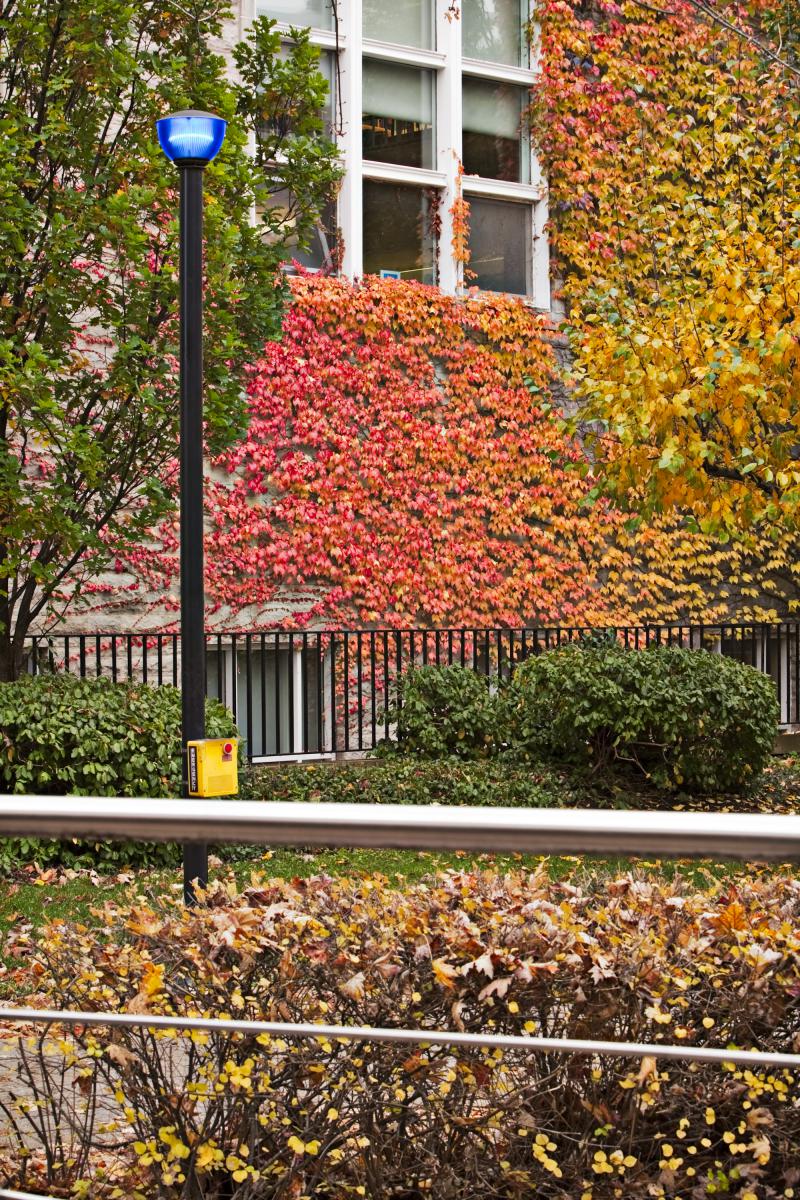Student safety a priority for Queen's
November 29, 2013
Share
 There are nearly 80 blue light
There are nearly 80 blue light emergency telephones and over
90 interior emergency telephones
across main and west campus.
By Communications Staff
As the days grow ever shorter and exam time nears, campus safety remains a high priority for Queen’s. With this in mind, the university, the Alma Mater Society (AMS), the Society of Graduate and Professional Students (SGPS) and community partners continue to provide important safety resources for students and the university community.
“Queen’s students have access to a wide array of safety resources, both on campus and in the wider community,” says Roxy Denniston-Stewart, Associate Dean (Student Services and Community Relations) in Student Affairs, and chair of Campus Safety Working Group. “From blue light emergency telephones, to the SeQure mobile app, Queen’s is committed to ensuring that students are aware of, and have access to, emergency and support services.”
The SeQure mobile phone app is among Queen’s most recent safety initiatives and provides instant access to campus and community emergency and crisis services. With the app installed on their mobile phones, students can be connected to Campus Security and Emergency Services and other resources at the touch of a button
Queen’s also has a network of nearly 80 exterior blue light emergency telephones and over 90 interior emergency telephones across main and west campus. These emergency phones connect individuals directly to Campus Security and Emergency Services in the event of an emergency or if someone is concerned about their safety.
David Patterson, Director of Campus Security and Emergency Services, reminds the campus community of the serious implications of the malicious use of emergency services such as the blue light network.
“The university takes the safety of its students very seriously and we need to be sure that our emergency services are available if and when they are needed,” says Mr. Patterson. “For example, when a blue light is activated, our personnel are immediately dispatched and will search the surrounding vicinity if no one is sighted when they arrive. That has the potential to take personnel away from genuine emergency situations.”
Each year an education campaign aims to discourage the malicious use of all emergency resources, such as fire alarms and blue lights. This year the AMS is focusing on preventing malicious blue light activations.
“As we have done in recent years, the Campus Safety Working Group is coordinating a number of awareness and advocacy campaigns with our campus partners, including students, to ensure that safety remains top of mind,” adds Associate Dean Denniston-Stewart.
To get the word out posters, social media and other tactics are being used to educate and inform community members about all the services that students have access to including the AMS’ WalkHome, holiday house checks and community crisis resources. This month, a new bystander intervention campaign is being introduced that encourages people to intervene if they see a disturbing or potentially violent situation.
For more safety information, visit http://queensu.ca/studentaffairs/safety.html